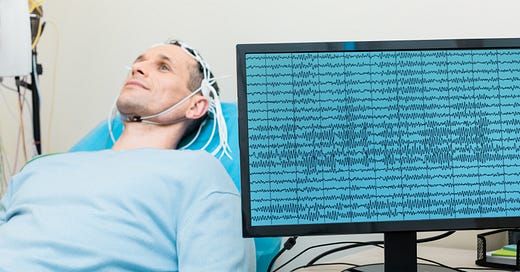Weekly Roundup: New Brain-Computer Interface, Map of Brain Regulating Emotions, How Exercise and Positivity Impacts Youths' Brains, and more
This week’s roundup takes you through a bunch of topics: we’ll explore a new brain-computer interface that can learn to adapt to each individual, a new map of how the brain regulates and generates emotions, and how (and whether) exercise and positivity in youth can impact brains in later life, not to mention depressed prairie voles!
Brain Computer Interface
Brain computer interfaces always generate a lot of interest though they have been around in some form for a long time. It is the stuff of sci-fi but also serves a very practical purpose of enabling disabled people to get more independence in everyday life.
Sometimes these brain-computer interfaces can enable the simplest of functions which make a massive difference - e.g. controlling a wheelchair and being able to actually have independent mobility for somebody who can’t, or being able to type on a computer for someone who is completely unable to communicate.
These brain-computer interfaces have become more advanced over the years but are still very complex and the biggest challenge to making them more widespread is that they need a lot of personalisation to each individual i.e. it takes a full team of experts to get them to work for an individual. Time consuming, complex, and costly. Wouldn't it be great to have a plug and play brain-computer interface?
Well, that is precisely what Satyam Kumar et al. at the University of Texas have got one step closer to doing. They developed a decoder tool that uses a simple task, simply balancing a bar between left and right, and measures activity from electrodes in a skull cap. This also provides the base for doing much more complex games such as, in this example, playing Mario Kart. But what’s more this has been used successfully to provides a standardised model that can be used for everyone but then adapts to each individual.
The dataset was developed from people without disabilities - and next step is to adapt this to those with disabilities - but a good step forward to a more plug-and-play brain-computer interface!
And that should make us all happy - which brings us nicely onto the topic of emotions: emotion generation and emotional regulation.
Regulating emotions
Emotions have been well-researched in the brain. We are still learning new things and refining these models of emotions in the brain (for example as I reported on this week on generalised fear). But what Ke Bo et al. of Dartmouth College wanted to find out is what is the difference between emotion generation and emotional regulation and systemically map this.
To do this two studies with 182 and 176 participants had emotions stimulated through visual input and then were asked to recontextualise the stimulus (a negative stimulus, it should be noted) or moderate this while having their brains scanned. This has provided a much more refined insight into how the brain can minimise negative emotions and hence be more resilient.
What did they find? How does this reappraisal function, and how did it affect emotional generation? The results show:
Keep reading with a 7-day free trial
Subscribe to leading brains Review to keep reading this post and get 7 days of free access to the full post archives.




